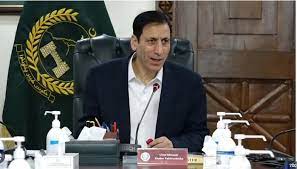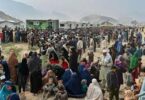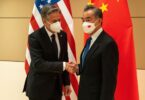The caretaker Khyber Pakhtunkhwa Government has initiated a High Impact Economic Plan, a comprehensive economic strategy to bring the Newly Merged Districts of the province on par with other regions of the country and province. As said, 10 important sectors including industry, commerce and technical education, mines and mineral development, agriculture, energy and power, livestock, forestry and environment, Irrigation and water, sports, tourism and youth affairs, roads and communication, and border economy have been declared as important targets for the development process. The caretaker leaders have earmarked an estimated cost of Rs. 142,614 million for development initiatives in these districts wherein, 139494 million rupees will be provided by the provincial government, while 3120 million rupees will be arranged through donor funds. A total of 96 initiatives including 23 road projects, 11 industries, 12 agriculture, 5 minerals, 8 tourism, sports and youth affairs, 3 energy and electricity, 7 livestock, 7 forestry and environment, 9 water, and 11 border economy projects will be completed under the initiative.
The KP interim government has conceived a gigantic development agenda that requires a colossal investment of several thousand million rupees together with multiple annums to accomplish that magnificent development plan in the newly merged districts. As the newly merged districts undergo a transformative period, it becomes imperative to focus on mainstreaming residents of these areas and empowering them to actively participate in the province’s progress. Historically, the merger of the Erstwhile Federally Administered Tribal Areas (FATA) with the settled areas of Khyber Pakhtunkhwa (KP) province marked a historic milestone for regional development and integration. The past successive governments including the PML-N and PTI gave utmost importance to the development and integration of Erstwhile FATA into mainstream areas over the past years. The federal government had pledged an annual allocation of 3% of the NFC award from the divisible pool for ex-FATA, intending to bridge the development gap, improve infrastructure, reduce poverty, and generate employment opportunities in the region. Meanwhile, the provincial government also allocates significant funds for the development and integration of newly merged districts to bring them on par with the rest of the areas.
The integration and development of Erstwhile FATA is a national cause, and all political governments irrespective of their political agenda, narratives and country’s financial constraints have been eager to bring this disadvantageous region into the national mainstream through the provision of extra funds, allocation of quotas in government jobs, higher educational institutions, training, and professional institutes in a bid to expedite this process to the maximum level. However, as far as interim government is concerned, its mandate is very limited and initiation of such colossal development projects involving several hundred thousand rupees does not come in their jurisdiction and would adversary affect the provincial treasury and national exchequer along with causing significant financial for the next elected government in the province as well as in the centre.
As of now, sincere implementation of the 25th amendment in true letter and spirit stands as a transformative stride toward the integration of the former tribal areas into the country’s mainstream. This signifies a pivotal shift, heralding socio-economic empowerment on the ontological insecurities if our leaders stuck to this nationally agreed upon instrument instead of preaching personality traits, ethnic legacy or party manifesto, that will not only integrate FATA into mainland Pakistan but will prosper the whole nation otherwise each sitting ruler will entail his agenda and every newly elected leader will pick a fresh begging bowl after sworn into office.







